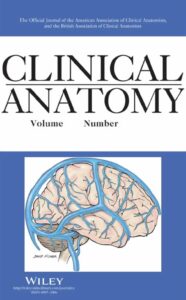Publications

Effect of prone trunk-extension on lumbar and lower limb muscle stiffness
Authors: Yuting Zhang 1, Mengtong Chen 1, Yanan He 1, Zhenzhen Guo 2, Yuanchao Li 1, Suiqing Yu 1, Hongying Liang 1, Junxiao Yin 1, Pengtao Sun 3, Zhijie Zhang 4, Chunlong Liu 1
Affiliations:
- Clinical Medical College of Acupuncture, Moxibustion, and Rehabilitation, Guangzhou University of Chinese Medicine, Guangzhou, Guangdong, China
- Department of Health Management, Henan Key Laboratory of Chronic Disease Management, Henan Provincial People’s Hospital, Zhengzhou University People’s Hospital, Henan University People’s Hospital, Zhengzhou, Henan, China
- Traditional Chinese Medicine Hospital of Guangdong Province, Guangzhou, Guangdong, China
- Luoyang Orthopedic-Traumatological Hospital of Henan Province, Luoyang, Henan, China
Journal: Clinical Anatomy - September 2024, Volume 37, Issue 6, Pages 605-612 (DOI: 10.1002/ca.24090)
-
Field & Applications:
- Sport
- Muscle development / Performance
This study investigated the effect of the prone trunk extension test (PTE) on lumbar and lower limb muscle stiffness to explore the optimal angle for lumbar muscle training, understand the peripheral muscle force transmission effect, and determine the modulation strategy and interaction mode of different muscles during PTE.
Twenty healthy young females were recruited for this study, and the stiffness of the erector spinae (ES), semitendinosus (ST), biceps femoris (BF), medial head of the gastrocnemius (MG), and lateral head of the gastrocnemius (LG) was measured by MyotonPRO under four angular PTE conditions (0° horizontal position, 10°, 20°, and 30°).
With the increasing angle, the stiffness of ES decreased gradually, while ST and BF increased first and then decreased. The stiffness of MG and LG increased first, then decreased, then increased. There was a moderate to strong negative correlation between ES stiffness variation and ST (r = -0.819 to -0.728, p < 0.001), BF (r = −0.620 to -0.527, p < 0.05), MG (r = -788 to -0.611, p < 0.01), and LG (r = -0.616 to -0.450, p < 0.05). Horizontal PTE maximizes the activation of ES. There is a tension transfer between the ES, hamstrings, and gastrocnemius, mainly between the ES, ST, and LG.
The study provides data to explore the effect of peripheral muscle force transmission and the modulation strategies of different muscles during trunk extension.
Keywords: erector spinae, force transmission, MyotonPRO, prone trunk extension, stiffness
In this study we found different biomechanical behaviors of ES and lower limb muscles during PTE. The flat position was the best position to exercise ES, there was a moderate to strong correlation between ES and lower limb muscle stiffness changes, and tension transfer was mainly present between ES, ST, and LG.


